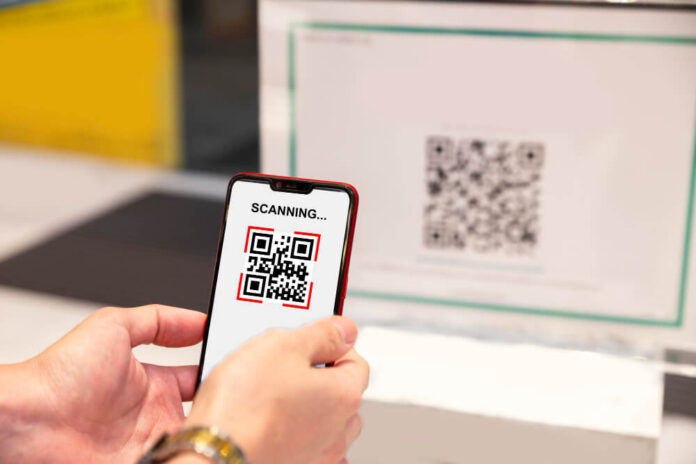In recent times, the landscape of marketing has undergone a transformative shift. While old-school methods have their charm, blending them with modern technological tools can propel a brand to new heights.
Imagine the power of a printed brochure enriched by the digital depth of a QR code. This integration not only bridges the gap between conventional and contemporary methods but also offers businesses a unique avenue for deepening customer connections.
In this article, we will uncover the magic of integrating traditional marketing with the prowess of modern tech like QR codes. We will show you some of its unique advantages and guide you on best practices.
What Are QR Codes, and Why Should You Consider Using Them in Your Marketing Strategy?
QR codes are a fascinating and innovative way to enhance your marketing strategy. They are sophisticated barcodes that a smartphone or tablet can scan to access information or content directly from the code.
QR codes can be used in many ways, including on product packaging, promotional materials, and billboards. Incorporating them into your marketing strategy can give your customers a unique and interactive experience they will remember.
By offering exclusive discounts or sneak peeks behind the scenes, QR codes can incentivize customers to engage with your brand and ultimately increase sales. With the rise of smartphone usage in society, QR codes are quickly becoming an essential tool for modern-day marketers.
If you are not sure how to go about this, Taradel EDDM services often help businesses reach their target audience and seamlessly integrate QR codes into print collateral. They can help you too!
Benefits of Using QR Codes for Traditional Marketing
One of the significant benefits of incorporating QR codes into traditional marketing campaigns is the ability to track engagement. By including a QR code on print collateral, businesses can gather data such as the number of scans, location, and scan time. This information can be used to analyze the effectiveness of campaigns and make adjustments as needed.
Apart from that, QR codes also allow businesses to create a more personalized and convenient customer experience. By directing potential customers to specific landing pages or customized content, businesses can tailor their marketing messages based on the interests and behaviors of their target audience.
Additionally, QR codes offer a cost-effective way to enhance traditional marketing efforts. With the ability to update and change the destination of a QR code at any time, businesses can save on reprinting costs and quickly adapt to changing marketing strategies.
How to Set Up a QR Code Campaign
Setting up a QR code campaign is relatively simple – all you need is a QR code generator and a specific destination for the code to direct users to. It could be a webpage, social media profile, or even an app download.
The key is ensuring that the information or content on the other end of the QR code provides value to your customers and aligns with your marketing goals.
Once the QR code is generated, it can be printed on any material or incorporated into digital promotions. Ensuring that the QR code is easily scannable and prominently placed for maximum engagement is crucial. It could include adding a call-to-action or providing clear code scanning instructions.
Tips for Leveraging Social Media Accounts to Promote Your QR Code Campaigns
Social media can be a powerful tool for promoting QR code campaigns and increasing engagement. Sharing the campaign on your social media accounts allows you to reach a wider audience and provide additional incentives for customers to scan the code.
This could include offering exclusive discounts or creating a buzz around new product launches. Apart from that, businesses can also use social media to track engagement and gather data from their QR code campaigns.
By using social media analytics, you can gain insights into which platforms drive the most scans and adjust your future marketing strategies accordingly.
Examples of Successful Businesses That Have Incorporated QR Codes into Their Marketing Plans
Some businesses that have successfully incorporated QR codes into their marketing plans include Starbucks, Spotify, and Coca-Cola.
Starbucks used QR codes to allow customers to quickly reload their gift cards through the company’s app, increasing convenience and encouraging repeat purchases.
Similarly, Spotify intelligently utilized QR codes by placing them on posters at concerts and events, allowing attendees to instantly access the artist’s music. Coca-Cola utilized QR codes on its bottles to direct customers to interactive games and promotions, creating a memorable brand experience.
Best Practices and Other Techniques to Optimize Your Use of Technology in Marketing
While QR codes offer many benefits for traditional marketing, it’s essential to consider other techniques and best practices to optimize the use of technology in your overall marketing strategy.
It can include leveraging data analytics to better understand your target audience and create targeted campaigns, utilizing social media influencers to reach a wider audience, and continuously adapting and updating your strategies based on industry trends.
Additionally, it’s essential to constantly test and measure the effectiveness of your technology-driven marketing efforts and make adjustments as needed. By staying up-to-date with technological advancements and incorporating them strategically into your marketing mix, businesses can effectively engage their target audience and stay ahead of the competition.
Final Note
QR codes offer a modern and interactive way to enhance traditional marketing efforts. From providing data tracking capabilities to creating a more personalized customer experience, businesses can leverage QR codes in various ways to increase engagement and drive sales.
















